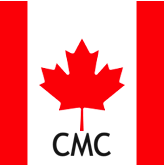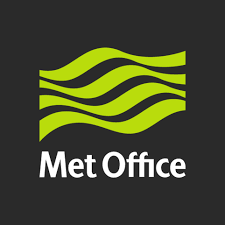 Latest releases Lite, Routing, Routing & Navigation arrive with a full renewed list of weather and ocean models in order to allow users to benefit from the evolution of the offer of international forecasting models. At the same time, all GRIB files go to format GRIB-2, this allows for a reduction in their size and a better compression ratio.
Latest releases Lite, Routing, Routing & Navigation arrive with a full renewed list of weather and ocean models in order to allow users to benefit from the evolution of the offer of international forecasting models. At the same time, all GRIB files go to format GRIB-2, this allows for a reduction in their size and a better compression ratio.
The number of models has increased from 42 down to 54 (to 44 down to 65 taking into account the new resolutions available for certain models). Some evolve, others are added, and some are withdrawn due to less relevance or redundancy. Models not listed below remain unchanged (Arpeggio, Arome, aso.).
Evolving Global Weather models
 • GFS adds a 1 -hour step to the four time steps yet available (3, 6, 9, 12 hours steps).
• GFS adds a 1 -hour step to the four time steps yet available (3, 6, 9, 12 hours steps).
 • ECMWF IFS now offers three resolutions 0.25°, 0,4° and 1°, four time steps (3, 6, 9, 12 hours steps) and four data : mean wind, pressure, precipitation and air temperature.
• ECMWF IFS now offers three resolutions 0.25°, 0,4° and 1°, four time steps (3, 6, 9, 12 hours steps) and four data : mean wind, pressure, precipitation and air temperature.
 • ECMWF AIFS, European experimental model based on Machine Learning (AI), arrives in all three applications with two resolutions 0.25° and 1°, and three time steps (6, 9, 12 hours steps). Same data as IFS.
• ECMWF AIFS, European experimental model based on Machine Learning (AI), arrives in all three applications with two resolutions 0.25° and 1°, and three time steps (6, 9, 12 hours steps). Same data as IFS.
 • ICON GLOBAL now provides four resolutions : 0,125°, 0,25°, 0,5° and 1°, with the same five time steps as the GFS.
• ICON GLOBAL now provides four resolutions : 0,125°, 0,25°, 0,5° and 1°, with the same five time steps as the GFS.
 • GDPS (ex GEM) : the Canadian model increases its resolution from 0.24° up to 0.15° and its timespan 6 down to 10 days with four time steps (3, 6, 9, 12 hours steps).
• GDPS (ex GEM) : the Canadian model increases its resolution from 0.24° up to 0.15° and its timespan 6 down to 10 days with four time steps (3, 6, 9, 12 hours steps).
![]() • ARPEGE Monde increase from 0.5° to 0.25° with four time steps (3, 6, 9, 12 hours steps).
• ARPEGE Monde increase from 0.5° to 0.25° with four time steps (3, 6, 9, 12 hours steps).
Evolving Regional Weather models
![]() • ARPEGE Europe now offers five time steps (1, 3, 6, 9, 12 hours steps).
• ARPEGE Europe now offers five time steps (1, 3, 6, 9, 12 hours steps).
 • ICON Europe now offers five time steps (1, 3, 6, 9, 12 hours steps).
• ICON Europe now offers five time steps (1, 3, 6, 9, 12 hours steps).
New Regional Weather models
 • HRRR CONUS covers the United States as the NAM, but with a very high resolution of 0.025° (1,5NM). Updated hourly, with 1 -hour steps range up to 18 hours steps.
• HRRR CONUS covers the United States as the NAM, but with a very high resolution of 0.025° (1,5NM). Updated hourly, with 1 -hour steps range up to 18 hours steps.
 • ICON D2 covers part of Western Europe with a very high resolution of 0.02° (1,2NM) updated every three hours with range up to 48 hours steps. It is the most accurate of the DWD models.
• ICON D2 covers part of Western Europe with a very high resolution of 0.02° (1,2NM) updated every three hours with range up to 48 hours steps. It is the most accurate of the DWD models.
 • UKV : British MetOffice model (UKHO) at a very high resolution of 0.05° covering the southern coasts of the British Isles with range up to 5 days with 1, 3, 6, 9, 12 hours steps, updated twice a day, with wind at 10 meters and gusts.
• UKV : British MetOffice model (UKHO) at a very high resolution of 0.05° covering the southern coasts of the British Isles with range up to 5 days with 1, 3, 6, 9, 12 hours steps, updated twice a day, with wind at 10 meters and gusts.
Evolving Ocean models
-
Waves
 • GFS WAVE : the former WW3 model by FNMOC is now assimilated to the GFS weather model (¹), with same characteristics (resolutions, timespan, steps, updates).
• GFS WAVE : the former WW3 model by FNMOC is now assimilated to the GFS weather model (¹), with same characteristics (resolutions, timespan, steps, updates).
![]() • MFWAM Global adds several time steps like the ARPEGE Monde model
• MFWAM Global adds several time steps like the ARPEGE Monde model
-
Current
![]() • COPERNICUS : the "MyOcean" designation of the current models disappears. Coverage and features remain the same : Global, IBI, ENWS, Baltic, MED.
• COPERNICUS : the "MyOcean" designation of the current models disappears. Coverage and features remain the same : Global, IBI, ENWS, Baltic, MED.
New Ocean models
![]() • HYCOM (Global) : Ocean currents at high resolution 0.08°, and low resolutions 0.25° and 0.5°, with 3 -hour steps range up to 7 days.
• HYCOM (Global) : Ocean currents at high resolution 0.08°, and low resolutions 0.25° and 0.5°, with 3 -hour steps range up to 7 days.
 • COPERNICUS SMOC : New global model of combined tidal and ocean currents, at high resolution of 0.083°(5NM), 0,25°(15 NM) and 0.5°(30 NM) in 1-hour increments. range up to 120 hours steps.
• COPERNICUS SMOC : New global model of combined tidal and ocean currents, at high resolution of 0.083°(5NM), 0,25°(15 NM) and 0.5°(30 NM) in 1-hour increments. range up to 120 hours steps.
 • WCPS Saint Lawrence River, Canadian MSC model, covers the St. Lawrence with a 0.5NM grid, with 1 -hour steps range up to 84 hours steps. Data provided : mean wind at 10 meters and currents.
• WCPS Saint Lawrence River, Canadian MSC model, covers the St. Lawrence with a 0.5NM grid, with 1 -hour steps range up to 84 hours steps. Data provided : mean wind at 10 meters and currents.
 • IFREMER : very high resolution currents, with grids up to 250 metres on the west and north coasts of France. By 1 -hour steps range up to 100 hours steps.
• IFREMER : very high resolution currents, with grids up to 250 metres on the west and north coasts of France. By 1 -hour steps range up to 100 hours steps.
![]() • IFREMER WW3 : combination of wave and current data for the west and north coasts of France, at very high resolutions. By 1 -hour steps range up to 100 hours steps.
• IFREMER WW3 : combination of wave and current data for the west and north coasts of France, at very high resolutions. By 1 -hour steps range up to 100 hours steps.
Removed models
Withdrawn models: COAMPS, GEM and WRF.
The back office
A new IT server infrastructure is implemented, in partnership with SailGrib, to support this change. They are calibrated for a significant increase in downloads, increase in resolutions, and the integration of very high resolution current files. These high-availability servers are spread over three locations, with an automatic failover process to ensure continuity of service. Improved procedures for downloading and checking input files should improve the quality of output GRIBs, with compression ratios of up to 80%. Good news for users with low throughput, and a real boon for Iridium GO users!®.
The User manuals French and English have been updated with these developments, and are yet available to download. They include detailed features and coverage maps for all models.
–––
(¹) New major evolution of the GFS model
–––



Excellent evolution, it's a shame that Scotland is not included in the UKV perimeter made available.
Superb improvement. Merci
Bravo !
Go and integrate the CFS models too ?
They seem interesting to me for programming very long passages (for example a transpac).
https://luckgrib.com/models/cfs/
The CFS model is a climatological model intended for research and completely unusable in navigation. It is not a weather model. For the Pacific, a model like the GFS at 16 days can already bring a trend for the second week. So imagine a routing to 180 days !
Congratulations to the whole team